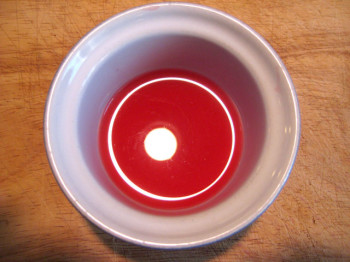
I don’t know why suddenly all of my wild edible concoctions are coming out hot pink—maybe it’s because pink is the color of love and it’s February? Regardless, here is some pretty-in-pink wild edible fun if you’re game:
Prickly pear & grapefruit syrup
Butter and I foraged these small, wrinkled prickly pears (Opuntia sp.) in the Denver area in fall, and every day of my time-sucking job after that they sat out on the counter, waiting for me to cook with them, until one day they were fully dried out.
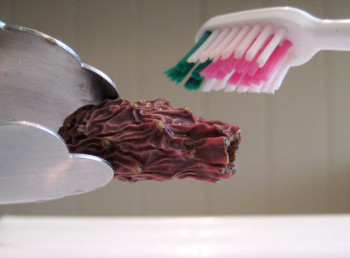
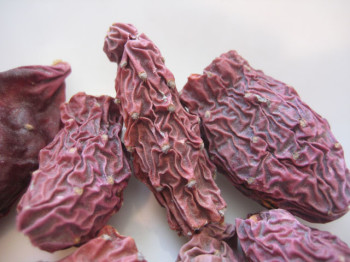
Because they were dry, it was pretty easy to remove the glochids (tiny spines) by scrubbing them thoroughly, skins intact, with a toothbrush—because they are that small, and a toothbrush is all we had (also pink). Then, after many spirited suggestions from folks on the Facebook page—such as to grind them whole and use as flour or to decoct into a tea to use for syrup—I chose the latter, simmering them whole in a small amount of water and mushing repeatedly with a potato masher to get out all the fruity essence before straining out pulp, seeds, and skin.
The resulting syrup came out surprisingly pink and mildly sweet. It was a joy to bring these apparently ruined fruits back to life like that. I mulled over what to do with that small bit of sauce for a while—after all, I only used about a dozen of the small prickly pears, which have no comparison to the big, plump fruits of other regions, though they are tasty nonetheless.
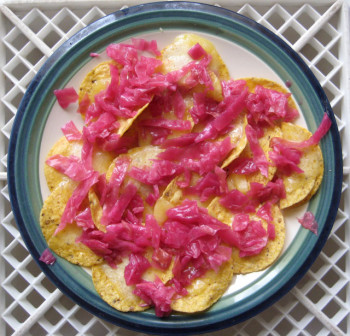
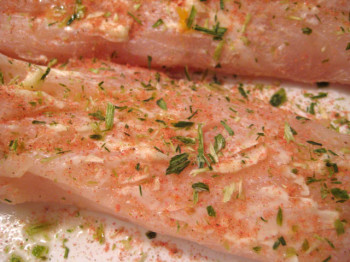
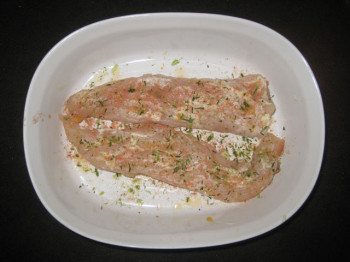
Sauerkraut nachos
Are you looking for a dish to express your love like no other? Try sauerkraut nachos. No, seriously. At the very least, they are lovely.
This hot pink sauerkraut was made by lactofermenting purple and green cabbage mixed with powdered wild juniper “berries” for several weeks in the closet, following general sauerkraut-making instructions by Sandor Ellix Katz in Wild Fermentation (2003). We have been going crazy with the sauerkraut ferments and what to do with them lately, so sauerkraut nachos is really just a ridiculous extension of our sauerkraut mania. Though it may seem unappealing, I, at least, have taken a shine to them.
Gregg tasted a batch and said they were good, but then decided not to eat any more after that—so maybe they’re not such a fab love food after all?
Striped bass, pinkened with sumac & garlic butter
I like a simple lemon butter sauce on striped bass (thanks to dad for catching it), but this time I used smooth sumac (Rhus glabra) to replace the lemon. On two different nights I topped the fish with sumac garlic butter.
The first time, I made a mouth-puckering tea of the sumac by simmering the dried “berries” in a small amount of water, and then added that to melted butter with cut-and-dried wild garlic (Allium sp.) bulbs and greens. I pulled apart the fish slightly and poured the mixture over to saturate, then baked at 350 degrees for 15 minutes. The flavor came out pronounced and tasty.
The second time I tried slathering butter and garlic on the fish first, then squeezing the juice of two very old Cuties on top, and sprinkling with finely ground sumac. The verdict? A nice presentation, but though the sumac powder was lemony on the surface of the fish, it needed a lot more to affect the flavor in a mouthful.
Still, pink fish—can you think of anything more romantic?
*Note: Butterpoweredbike foraged the sumac used in this recipe, though I too have plenty of sumac foraging under my belt from back in the day. The Allium was also from a fun foraging day last summer in the Denver area with B.
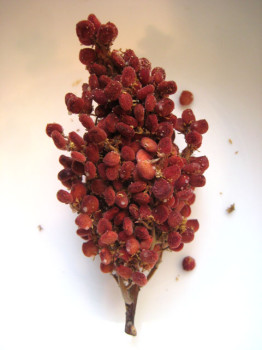
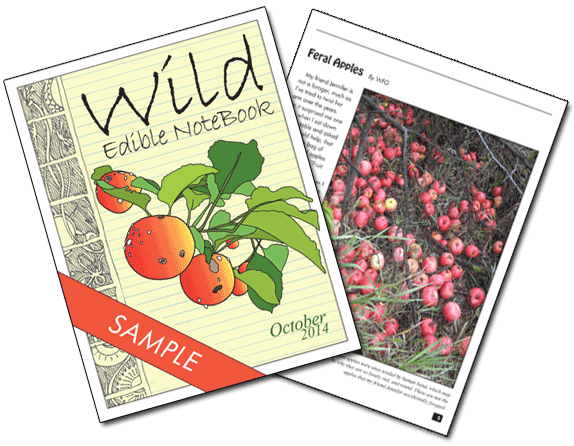
Leave a Reply